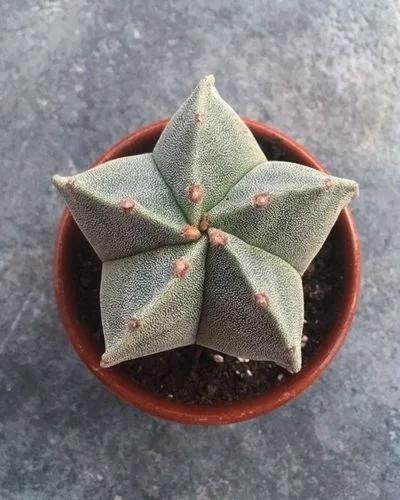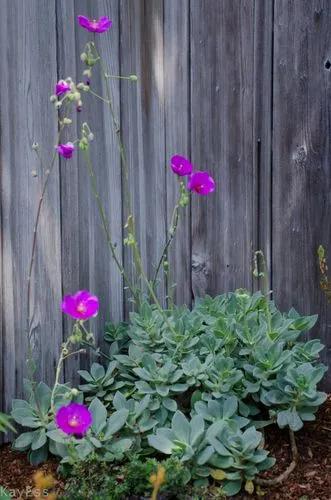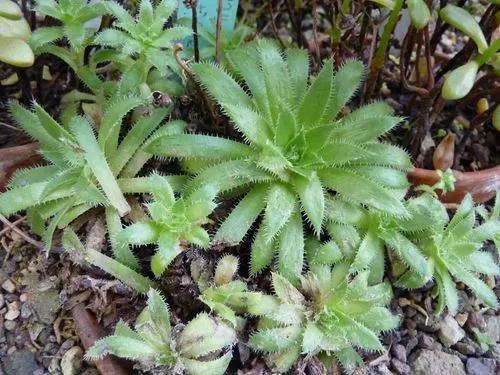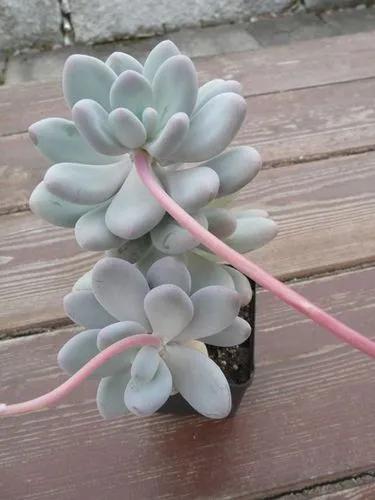The Sunrise Succulent is a member of the Portulacaceae family, which includes the well-known garden plant Purslane. This low-maintenance, easy-to-care-for succulent is ideal for beginners.
Sunrise Succulent Care
Anacampseros rufescens
Other names: Sand Rose



Anacampseros rufescens is a small, distinctive, low-growing plant native to South Africa. It gets its name from its beautiful, soft pink or purplish-red flowers that bloom in the early morning.
Look for small, fleshy leaves that are green or gray-green in color to identify this succulent. The leaves form a rosette pattern and have a waxy or velvety texture, and it also has thin, wiry stems and small, tube-like flowers that bloom early in the morning. The plant can grow up to 0.5 ft (15 cm) tall and spread up to a foot wide, making it an ideal container plant.
How to Care for the Plant

Water

It's best to let the soil dry out completely before watering again. Depending on the humidity and temperature of your environment, watering once every week or two should do the trick. Just be cautious not to overwater, as this plant is sensitive to too much moisture.

Pruning

The plant does not require pruning, but remove any dead or damaged leaves if you want to encourage more growth. This will not only make the plant more visually appealing, but it will also direct the plant's energy toward growing more healthy foliage.

Fertilizer

Sunrise Succulent does not require fertilizing, but if you do, use a balanced fertilizer with a 20-20-20 or 30-10-10 ratio. Fertilize only during the growing season (spring and summer), and dilute the fertilizer to half the recommended strength to avoid over-fertilization.

Sunlight

This Anacampseros prefers bright, indirect sunlight. It is best to keep the plant in a location that receives at least a few hours of direct sunlight, but not too much, as this could cause it to become sunburned.

Soil

This succulent prefers nutrient-rich and well-draining soil. You can either use a cactus or succulent mix from the store or make your own by combining potting soil, perlite, and coarse sand in equal parts. Avoid using soil that retains too much moisture, as it can lead to root rot.

Propagation

The succulent is easy to propagate. You can use stem or leaf cuttings; simply cut a limb from the plant's base and place it in a well-draining potting mix. Then, keep the soil moist, and you should see new growth in a few weeks.

Temperature

Temperature-wise, the Anacampseros rufescens is quite hardy and can withstand temperatures ranging from 10-27°C (50-80°F). Avoid exposing the plant to temperatures below 10°C (50°F) or placing it in drafty areas, as this may cause damage.

Container

You can grow it in a small pot or container with well-draining soil, just make sure it has drainage holes to prevent waterlogging.

Fun fact

The Sunrise Succulent can sometimes be referred to as a "living stone" plant because its leaves resemble pebbles.

Popularity

2,104 people already have this plant 751 people have added this plant to their wishlists
Discover more plants with the list below
Popular articles






